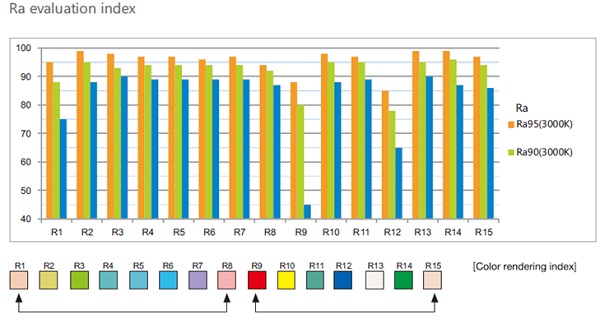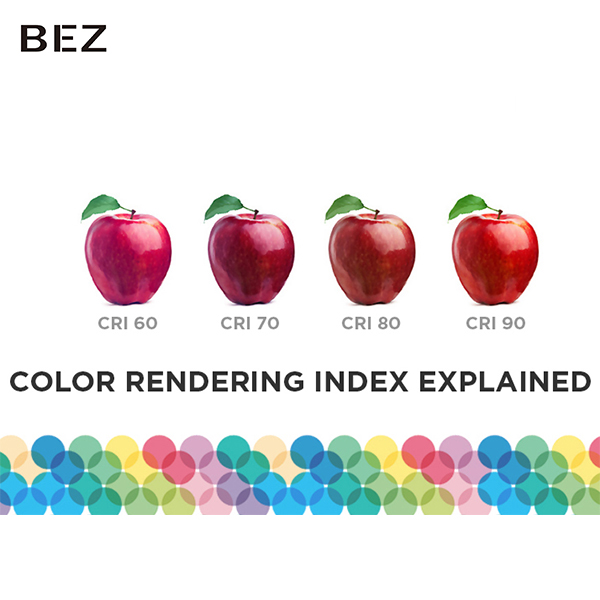News
Contact Us
Tel:0760-87823308
Fax:0760-87823308
ADD: No.18 Huanzhen North, Henglan Town, Zhongshan City, GD, China, ZC. 528400
E-mail:Info@bezlight.com
Web:www.bezlight.com
DetailedCRI, measured on a scale from 1 – 100, indicates how accurately a given light source renders colors in the space it illuminates.
An LED’s CRI is calculated by measuring its CRI ratings for individual colors and then averaging them out, but it’s only a measurement of colors R1 – R8. This measured average fails to take into account R9 (red) and R13 (skin tone) colors, among others. LED light sources with high R9 and R13 values, in addition to a high CRI (for R1 – R8), do a good job of making skin tones look more healthy and natural.
So how does this affect your choice of LED lighting? For living spaces where ambiance is important (kitchens, living rooms, bedrooms, bathrooms), high R9 and R13 LEDs will make you feel more at ease.
t’s important to note that CRI is different than color temperature, which is another popular and important measurement of the qualities of LED lighting. As far as CRI, R9, and R13 are concerned, the closer you can get to 100 the better.
Selecting the appropriate color temperature (how warm or cool the undertones of the light are, measured in Kelvin) depends on personal preference and colors that appear in the space. Higher color temperature (cooler) LEDs are appropriate for cool/blue-toned spaces while lower color temperature (warmer) LEDs like 2700K are great for red/warm-toned spaces. Warmer color temperatures provide a cozier atmosphere.


Make colors more realistic
The color rendering index as high as Ra>90 is closer to the natural color of the object.
BEZ Lighting knows well the requirement of Color Rendering, so we applies the Led chips at high CRI with Ra>90 or Ra>95 for downlights, track lights, panel lights and etc.

